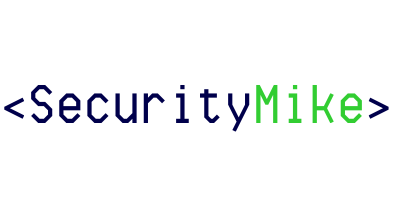In today’s digital age, cybersecurity has become a critical concern for individuals, businesses, and governments alike. The traditional approach to cybersecurity has focused on building strong defenses to protect against cyberattacks. However, as cybercriminals become more sophisticated and their tactics evolve, there is a need for a new approach to cybersecurity. This is where “hacking the hackers” comes into play.
Hacking the hackers is a new approach to cybersecurity that involves understanding the mindset of cybercriminals, using their own tactics against them, and staying one step ahead of their malicious activities. It is about thinking like a cybercriminal in order to anticipate their moves and develop effective countermeasures. By adopting this approach, organizations can proactively identify vulnerabilities, exploit them before cybercriminals do, and ultimately enhance their overall cybersecurity posture.
Key Takeaways
- Hacking the Hackers is a new approach to cybersecurity that involves understanding the mindset of cybercriminals and using tools and techniques to exploit their vulnerabilities.
- Social engineering and penetration testing are two key tools used in Hacking the Hackers.
- Deception is an important tactic in Hacking the Hackers, as it can be used to trick cybercriminals into revealing their secrets.
- Collaboration is crucial in Hacking the Hackers, as building a strong cybersecurity community can help identify and address emerging threats.
- The ethics of Hacking the Hackers must be carefully balanced with the need for security and privacy.
Understanding the Mindset of Cybercriminals: A Key to Hacking the Hackers
To effectively hack the hackers, it is crucial to understand the psychology behind cybercriminals’ actions. Cybercriminals are driven by various motivations, including financial gain, political or ideological reasons, personal vendettas, or simply the thrill of causing chaos. By understanding these motivations, cybersecurity professionals can better anticipate their actions and develop strategies to counter them.
Thinking like a cybercriminal involves putting oneself in their shoes and considering how they would approach a target. This requires knowledge of their tactics, techniques, and procedures (TTPs), as well as an understanding of the tools and techniques they use. By adopting this mindset, cybersecurity professionals can identify potential vulnerabilities in systems and networks and develop effective countermeasures to mitigate them.
Tools and Techniques for Hacking the Hackers: From Social Engineering to Penetration Testing
Hacking the hackers involves using a variety of tools and techniques to gain insight into their activities and exploit vulnerabilities. One such technique is social engineering, which involves manipulating individuals into divulging sensitive information or performing actions that may compromise security. By understanding the psychology of social engineering, cybersecurity professionals can develop effective countermeasures to protect against these tactics.
Another important tool in hacking the hackers is penetration testing. Penetration testing involves simulating a cyberattack to identify vulnerabilities in systems and networks. By conducting regular penetration tests, organizations can proactively identify and address vulnerabilities before cybercriminals have a chance to exploit them.
In addition to social engineering and penetration testing, there are various other hacking tools and techniques that can be used to hack the hackers. These include network scanning tools, password cracking tools, and vulnerability scanning tools. By leveraging these tools effectively, cybersecurity professionals can gain valuable insights into the tactics and techniques used by cybercriminals and develop effective countermeasures.
The Art of Deception: How to Trick Cybercriminals into Revealing Their Secrets
Deception plays a crucial role in hacking the hackers. By tricking cybercriminals into revealing their secrets, cybersecurity professionals can gain valuable intelligence and stay one step ahead of their malicious activities. Deception techniques can range from creating fake personas and websites to setting up honeypots that lure cybercriminals into a trap.
One example of successful deception techniques is the use of honeytokens. Honeytokens are pieces of fake or decoy data that are strategically placed within a network or system. When a cybercriminal accesses or interacts with these honeytokens, it triggers an alert, allowing cybersecurity professionals to identify and respond to the threat.
Developing effective deception strategies requires a deep understanding of cybercriminals’ tactics and motivations. By studying their TTPs and analyzing their past activities, cybersecurity professionals can develop deception techniques that are tailored to their specific adversaries.
Identifying Vulnerabilities and Exploiting Them: The Basics of Hacking the Hackers
To effectively hack the hackers, it is crucial to identify vulnerabilities in systems and networks and exploit them before cybercriminals do. This involves conducting thorough vulnerability assessments and penetration tests to identify potential weaknesses.
Vulnerability assessments involve scanning systems and networks for known vulnerabilities and misconfigurations. By regularly conducting vulnerability assessments, organizations can proactively identify and address vulnerabilities before they are exploited by cybercriminals.
Once vulnerabilities are identified, they can be exploited to gain unauthorized access to systems or networks. This can be done through various techniques, such as exploiting software vulnerabilities, leveraging weak passwords, or using social engineering tactics. However, it is important to stay within ethical boundaries when exploiting vulnerabilities and ensure that proper authorization is obtained before conducting any hacking activities.
The Role of Artificial Intelligence in Hacking the Hackers: From Machine Learning to Natural Language Processing

Artificial intelligence (AI) is changing the game in cybersecurity, including hacking the hackers. AI-powered cybersecurity tools can analyze vast amounts of data, detect patterns, and identify potential threats in real-time. Machine learning algorithms can learn from past cyberattacks and adapt their defenses accordingly, making them more effective at detecting and mitigating future threats.
One example of AI-powered cybersecurity tools is anomaly detection systems. These systems use machine learning algorithms to establish a baseline of normal behavior within a network or system. Any deviations from this baseline are flagged as potential threats, allowing cybersecurity professionals to investigate further.
Natural language processing (NLP) is another AI technology that can be used in hacking the hackers. NLP algorithms can analyze text data, such as emails or chat logs, to identify suspicious or malicious activities. By leveraging NLP, cybersecurity professionals can gain valuable insights into cybercriminals’ communications and intentions.
The Importance of Collaboration in Hacking the Hackers: Building a Strong Cybersecurity Community
Collaboration plays a vital role in hacking the hackers. By working together, cybersecurity professionals can share knowledge, exchange best practices, and collectively develop effective strategies to counter cybercriminals. Collaboration can take various forms, including information sharing platforms, industry partnerships, and public-private collaborations.
One of the benefits of collaboration in cybersecurity is the ability to pool resources and expertise. By sharing information about emerging threats and vulnerabilities, organizations can collectively develop effective countermeasures and stay one step ahead of cybercriminals.
Building a strong cybersecurity community requires trust, transparency, and open communication. It involves creating a culture of collaboration where organizations are willing to share information and work together towards a common goal of enhancing cybersecurity.
The Ethics of Hacking the Hackers: Balancing the Need for Security with the Need for Privacy
Hacking the hackers raises ethical considerations that need to be carefully balanced. While the goal is to enhance cybersecurity and protect against cybercrime, it is important to respect individuals’ privacy and ensure that hacking activities are conducted within legal and ethical boundaries.
Transparency and accountability are key principles in hacking the hackers. Organizations should clearly communicate their intentions and obtain proper authorization before conducting any hacking activities. They should also ensure that any data collected during these activities is handled responsibly and in accordance with applicable laws and regulations.
Balancing the need for security with the need for privacy requires a thoughtful approach. It involves conducting thorough risk assessments, implementing appropriate safeguards, and regularly reviewing and updating policies and procedures to ensure compliance with legal and ethical standards.
The Future of Hacking the Hackers: New Technologies and Emerging Threats
The landscape of cybersecurity is constantly evolving, with new technologies and emerging threats emerging on a regular basis. To stay ahead of cybercriminals, it is crucial to embrace these new technologies and adapt strategies accordingly.
One emerging technology that has the potential to revolutionize cybersecurity is quantum computing. Quantum computers have the ability to solve complex mathematical problems much faster than traditional computers, which could potentially render current encryption algorithms obsolete. By understanding the implications of quantum computing and developing quantum-resistant encryption algorithms, cybersecurity professionals can prepare for this future threat.
Other emerging threats include the Internet of Things (IoT) and artificial intelligence (AI) powered attacks. As more devices become connected to the internet, the attack surface for cybercriminals increases. By understanding the vulnerabilities associated with IoT devices and developing effective countermeasures, organizations can protect against these emerging threats.
Hacking the Hackers as a Vital Tool in the Fight Against Cybercrime
In conclusion, hacking the hackers is a new approach to cybersecurity that involves understanding the mindset of cybercriminals, using their own tactics against them, and staying one step ahead of their malicious activities. By adopting this approach, organizations can proactively identify vulnerabilities, exploit them before cybercriminals do, and ultimately enhance their overall cybersecurity posture.
To effectively hack the hackers, it is crucial to understand the psychology behind cybercriminals’ actions and think like a cybercriminal. This involves adopting their mindset, studying their tactics and techniques, and developing effective countermeasures.
Hacking the hackers requires a variety of tools and techniques, including social engineering, penetration testing, and other hacking tools. Deception plays a crucial role in hacking the hackers, as it allows cybersecurity professionals to trick cybercriminals into revealing their secrets.
Collaboration is also important in hacking the hackers, as it allows cybersecurity professionals to share knowledge and collectively develop effective strategies. However, it is important to balance the need for security with the need for privacy and ensure that hacking activities are conducted within legal and ethical boundaries.
The future of hacking the hackers lies in embracing new technologies and adapting strategies accordingly. Quantum computing, IoT, and AI-powered attacks are among the emerging threats that organizations need to prepare for.
In conclusion, hacking the hackers is a vital tool in the fight against cybercrime. By understanding the mindset of cybercriminals, using their own tactics against them, and staying one step ahead of their malicious activities, organizations can enhance their overall cybersecurity posture and protect against emerging threats.
If you’re interested in learning more about cybersecurity and staying ahead in the digital age, I highly recommend checking out this article from Security Mike: “Staying Ahead in the Digital Age: Elevating Cybersecurity Awareness and Practices.” This insightful piece provides valuable tips and strategies for individuals and businesses to enhance their cybersecurity practices and protect themselves from cyber threats. It’s a must-read for anyone looking to strengthen their online security. Read more
FAQs
What is the article about?
The article is about the concept of “hacking the hackers” and how it can be used to turn the tables on cyber attacks.
What is meant by “hacking the hackers”?
“Hacking the hackers” refers to the practice of using offensive techniques to identify and neutralize cyber attackers.
Why is “hacking the hackers” important?
“Hacking the hackers” is important because it allows organizations to proactively defend against cyber attacks and prevent future attacks from occurring.
What are some offensive techniques used in “hacking the hackers”?
Some offensive techniques used in “hacking the hackers” include honeypots, decoy systems, and malware analysis.
What is a honeypot?
A honeypot is a decoy system that is designed to attract cyber attackers and gather information about their tactics and techniques.
What is a decoy system?
A decoy system is a fake system that is designed to distract cyber attackers and prevent them from accessing sensitive information.
What is malware analysis?
Malware analysis is the process of analyzing malicious software to identify its behavior, purpose, and potential impact on a system.
How can “hacking the hackers” be used to prevent future cyber attacks?
By using offensive techniques to identify and neutralize cyber attackers, organizations can gain valuable insights into their tactics and techniques, which can be used to improve their defensive strategies and prevent future attacks from occurring.

